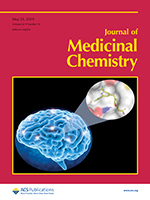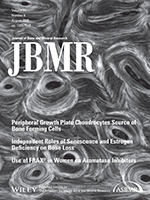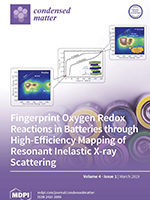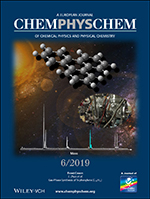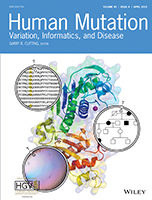PDE4D enzymes are important for normal brain function. Mutations have been asssociated with an ultrarare neurodevelopmental disorder, and genetic variation in PDE4D contributes to biological variation in human cognitive ability. Here, researchers report on novel PDE4D inhibitors providing potent memory-enhancing effects in a mouse model, with improved tolerability and reduced vascular toxicity over earlier PDE4 inhibitors. Read more »
Journal Covers
Structural Characterization of a Synthetic Tandem-Domain Bacterial Microcompartment Shell Protein Capable of Forming Icosahedral Shell Assemblies
Bacterial microcompartments (BMCs) are subcellular compartments found in many prokaryotes, and they are of considerable interest for biotechnological applications. The BMC-H2 shell system constitutes a relatively simple generic building block that could be used to construct designed shells with a relatively highly tunable pore. Read more »
Mechanical Competence and Bone Quality Develop During Skeletal Growth
Researchers explored how bone quality and mechanical competence progress during longitudinal bone growth. Deformation at the tissue, fibril, and mineral length scales was investigated with mechanical tensile tests during small and wide-angle x-ray scattering/diffraction (SAXS/WAXD) experiments, revealing dramatic differences in mechanical resistance with age. Read more »
Fingerprint Oxygen Redox Reactions in Batteries through High-Efficiency Mapping of Resonant Inelastic X-ray Scattering
We provide a comprehensive analysis and an explicit interpretation of the five evolving components of O-K mRIXS of the typical battery electrode that involves lattice oxygen redox reactions upon cycling. This work is the first benchmark for a complete assignment of all the important mRIXS features collected from battery materials, and thus delivers guidelines for future studies of oxygen redox reactions. Read more »
Gas‐Phase Synthesis of Triphenylene (C18H12)
The cover image shows the triphenylene molecule as a potential precursor to two‐dimensional graphite nanosheets in the interstellar medium. The barrier‐less, exoergic nature of the reaction reveals a versatile reaction mechanism that may drive molecular mass growth processes in cold environments in deep space. Read more »
Conductive triethylene glycol monomethyl ether substituted polythiophenes with high stability in the doped state
Researchers synthesized and characterized two iodine-doped polymers with high conductivity and stability. The doping increases the transparency of thin films of the polymer, which are resistant to common organic solvents. All these properties indicate great potential for the polymers to be used in applications such as organic field effect transistors, organic photovoltaic devices, and sensors. Read more »
Biochemical and structural characterization of two variants of uncertain significance in the PMS2 gene
The lack of information as to whether a genetic mutation is pathogenic or benign causes ambiguity during clinical diagnosis and hinders appropriate treatment. Here, researchers use several techniques, including small‐angle x‐ray scattering, to help classify genetic variants associated with an increased predisposition to certain cancers. Read more »
Comparative morphology of cheliceral muscles using high‐resolution X‐ray microcomputed‐tomography in palpimanoid spiders
Spiders are important predators in terrestrial ecosystems, yet we know very little about their principal feeding structures—the chelicerae—an extremely important aspect of spider biology. Here, using micro‐Computed‐Tomography scanning techniques, researchers perform a comparative study to examine cheliceral muscle morphology in six different spider specimens. Read more »
Pressure-driven band gap engineering in ion-conducting semiconductor silver orthophosphate
This work explores a novel method to tune the electronic band structures of active semiconductor photocatalysts to gain insight into structure–property relationships. Taking silver orthophosphate (Ag3PO4) as an example, a static pressure technique was applied to modulate the band gap and indirect–direct band character via altering its crystal structure and lattice parameters. Read more »
Spatial and Temporal Correlations of XY Macro Spins
Artificial spin-ice structures have become prototypical systems to study vector spin frustration at the microscale and have recently been expanded towards XY spin systems and fundamentally fascinating phase transitions. The illustration depicts the quasi long-range ordered vortex phase in a nano disk honeycomb lattice imaged by magnetization-sensitive photoemission electron microscopy. Read more »
- « Previous Page
- 1
- …
- 14
- 15
- 16
- 17
- 18
- …
- 21
- Next Page »
